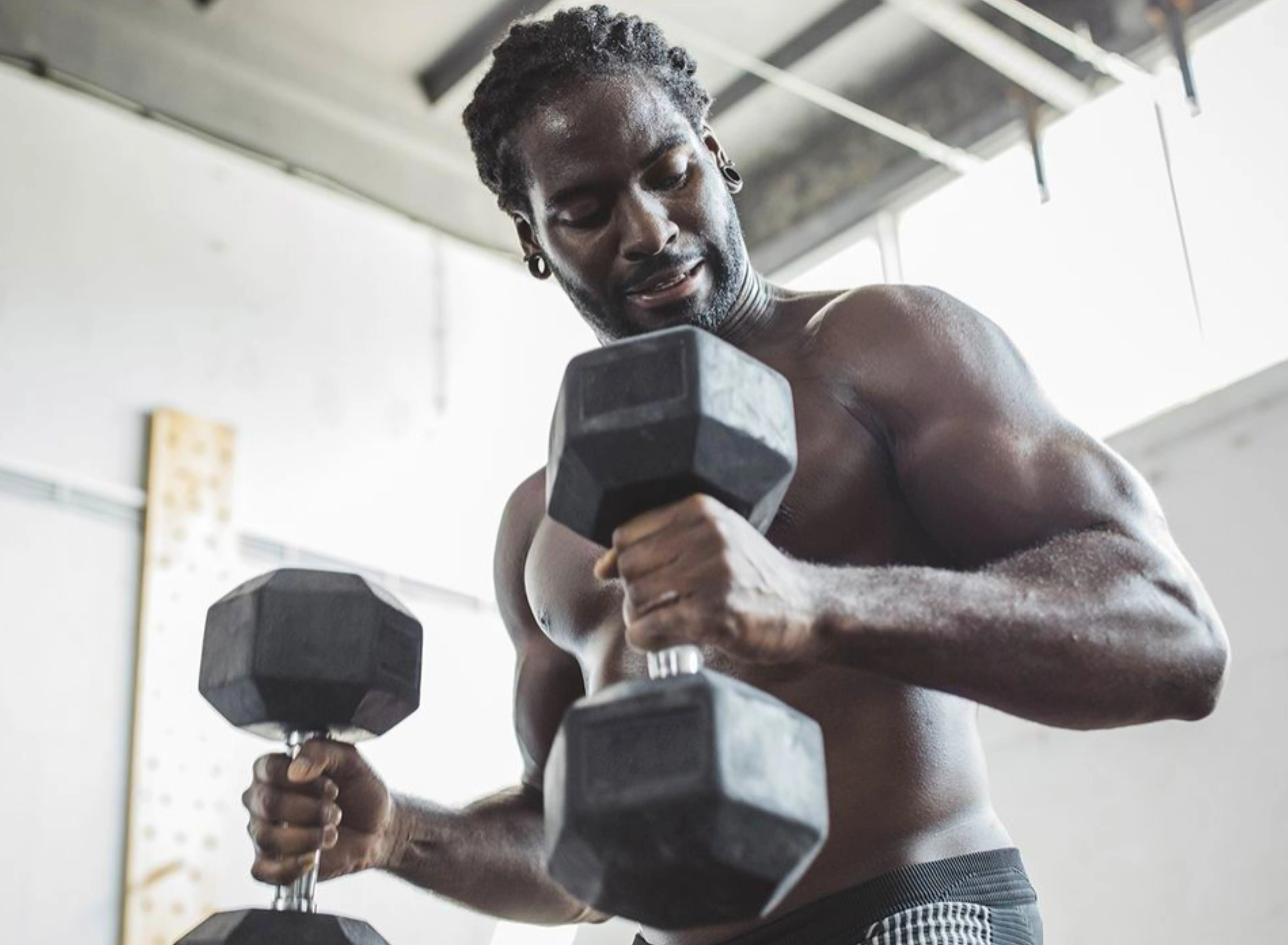Here’s a weightlifting fact that surprises a lot of people: Bigger muscles don’t necessarily mean enormous strength. In fact, bigger muscles mean bigger muscles. As Superman actor Henry Cavill just revealed to our sister site Celebwell, he doesn’t lift huge weights to get his enormous arms—he actually lifts smaller weights to pump as much blood to his muscles as possible to grow their size. “You’re doing micro-tears and you’re creating size in the muscle and not necessarily huge amounts of strength,” he explained.
-
1. Yes, You Should Be Strength Training
Let’s get one thing out of the way first. It’s simply a fact that cardio exercise—running, cycling, brisk walking, etc.—remains the more popular form of exercise on the planet. According to some statistics, roughly 60% of all exercisers don’t strength train at all, which is nearly double the amount who don’t engage in aerobic exercise. Now, if you believe the top doctors, trainers, and other exercise experts, this needs to change—and especially if you’re getting older.
Strength training will help you burn fat and manage your weight, improve your balance and coordination, help you sleep, build your muscle mass, and, yes, even improve your self-esteem. It’s crucial to lift weights as you age.
One study published in Medicine & Science in Sports & Exercise concluded that women who lift weights are 17% less likely to develop heart disease than those who don’t. Another study published in the same scientific journal reports that as little as under an hour per week spent lifting weights can reduce the risk of heart attack or stroke by 40 to 70%.
“For both men and women it can be hugely beneficial,” Traci D. Mitchell, PT, a health coach and author of The Belly Burn Plan, explained to us. “Not only does strength training increase muscle mass, which boosts metabolism, but it also boosts the body’s natural collagen production. It’s critical we have optimal collagen levels to maintain joint health. It’s produced at high levels until 18. Around 25 it drops, then swan dives after 40.”
If you’re still not convinced on the importance of hitting the weight room, know that one study published in The American Journal of Medicine concludes the more muscle mass an older adult has (again, muscle mass is gained through strength training), the less likely that person is to die prematurely.
-
2. The Benefits of Lifting Heavier Weights
The new study published in Medicine & Science in Sports & Exercise analyzed 28 studies that included information on more than 700 healthy adults, and the amounts of weights that they lifted. At the end of the study, they found that different types of weights all were capable of increasing the size of your muscles (for the record, it’s called “hypertrophy”), but only people who lifted higher or moderate loads significantly improved their strength.
“That means lighter loads may ‘grow’ your muscles, but it’s the heavier weights that will make them much stronger, according to lead researcher Pedro Lopez, M.Sc., Ph.D.(c), at the Exercise Medicine Research Institute at Edith Cowan University in Australia,” observes Runner’s World.
-
3. Why Is This the Case?
According to Lopez, when you lift heavier weights instead of lighter weights, you’re simply forced to use more muscle fibers to complete the lift. “That improves coordination within and between muscles in ways that contribute to more force,” wrote Runner’s World. “Translation: More strength through increased firing frequency.“
-
4. How Should You Put This into Practice?
Our resident trainer, Tim Liu, C.S.C.S., recommends that people lift either 2 or 3 days per week—Lopez agrees. As for knowing that you’re lifting heavy enough, he says that you should be able to perform between 8 and 12 reps in a set and feel fatigued. If you can do more than 12 in one go and you’re not tired, you’re not lifting heavy enough. If you’re in the market for some great workouts to try, here you go:
- Try This Simple Bodyweight Workout to Burn Fat and Get Lean
- Over 60? Here Are 5 of the Best Exercises You Can Possibly Do
- These Are the 5 Best Exercises for Toning Your Abs, Says Trainer
- One Trendy Celeb Exercise Trick You Can Try at Home, Says Trainer
- Do These Exercises for a Toned and Healthy Summer Body, Says Trainer

For more news and updates, follow IFBNewsfeed.Org on Facebook, Twitter, and Instagram.























































